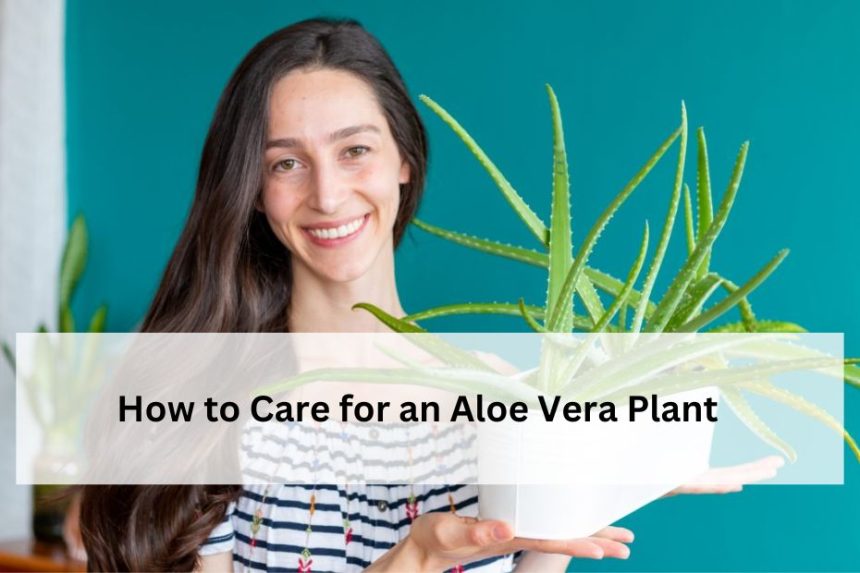The healing properties of aloe vera have made it a popular houseplant. For instance, aloe vera gel, which is derived from aloe plants, is commonly used to alleviate skin irritations, sunburns, and light burns.
You can find aloe plants, formally known as aloe barbadensis, in both dry deserts and verdant tropical rainforests. Their dimensions might be anywhere from a few inches to over five feet in length and breadth.
Medicinal uses of aloe vera, also known as medicinal aloe, date back thousands of years to several ancient cultures. These include the Chinese, the Egyptians, and the Greeks. For a wide range of skin irritations, aloe vera is still a go-to remedy for many cultures.
If you want to enjoy the benefits of an aloe plant all year round, here’s how to cultivate and care for one.
Succulents that use their leaves to retain water are the most common description of the aloe vera plant. Aloe plants, when given the correct conditions—a lot of water, sunshine, and a cool temperature—grow into tall spikes that are laden with tubular flowers. Aloe vera plants have the ability to produce dozens of beautiful crimson or orange blossoms, which are not often seen on houseplants.
The genus Aloe is a subfamily of the wider family Liliaceae. There are 420 different species of aloe, but the most well-known and widespread is aloe vera, which is also the most beneficial. Though it is currently cultivated all across the globe, the plant originally hails from eastern and southern Africa.
Aloe vera has a longer and more interesting history than just being a popular natural treatment for burns and other skin issues. Aloe vera has a long history of use; the ancient Egyptian Cleopatra and Alexander the Great both used it to soothe their skin and heal wounds. The American people originally encountered aloe as a laxative.
Contemporary aloe vera plants are low-maintenance and provide numerous useful benefits.
Aloe Plant Maintenance Instructions
For those just starting out with plants, aloe is a great choice because it requires nothing in the way of watering or fertilizer and thrives in full sun. With the right care, your indoor aloe sprout has a potential lifespan of twelve years.
Intended Parenthood
Because aloes aren’t picky eaters, you can get away with using less fertilizer on them. The aloe plant might suffer damage from an excess of fertilizer.
Fertilize your aloe plants in the spring before they start to sprout new growth for the greatest results. Either a regular houseplant fertilizer or one specifically designed for succulents and cacti will do the trick. Thoroughly dilute the fertilizer to half its strength as directed on the packaging.
Light
Aloe plants thrive in full, indirect sunshine. The plant will receive abundant sunshine if placed in the kitchen window, which is a common spot. A sunny site is ideal for outdoor aloe vera cultivation. However, you shouldn’t simply transfer an indoor plant to direct sunlight; ironically, it can suffer sunburn.
Add grow lights to your setup if you happen to reside in an area where the amount of natural light is insufficient. However, if you insist on using artificial light, spare your plants the harsh light by relocating them to a dark room or even a closet.
Raising an Aloe Plant in a Pot
Your delicate plant will thrive in a pot made of porous material, such as terra cotta. Thanks to these, the ground will remain dry. Using plastic containers increases the amount of time the soil stays damp. The pot’s width and depth should be approximately equal, and it should be substantial enough so that it doesn’t topple over.
The Ground
The ideal soil for aloe plants is one that drains properly. Soil for gardens is not the best option. You should instead use pre-made potting soil or create your own mixture of sand, peat moss, and perlite in equal proportions.
Additionally, make sure the container has drainage holes so water doesn’t pool around the roots of your aloe plant. It is not necessary to use gravel as a base layer for the pot.
Celsius level
The best temperature range for aloe plants is 55 to 85 degrees Fahrenheit because they thrive in warm weather. Leaves will pucker or become yellow in extreme cold. Be careful not to put these plants in an area where a door or window is always opening or shutting; they also dislike drafts.
Watering
Because they are succulents, aloe plants require very little water. Overwatering will cause them to decay.
So, how frequently is it recommended to water an aloe plant? Except in really hot and dry climates, once a week should be more than enough watering for the plant. Subsequently, you should probably water it twice weekly. Wait until the earth is totally dry before giving it another soaking.
Give your aloe vera plant lots of water because it likes to drink deeply.
The Art of Aloe Plant Pruning
If you want your aloe plant to remain healthy and grow correctly, you must clip its leaves frequently. Remove the brown and brittle tops of the spikes by picking them off with your fingertips. If you want to give the plant a more thorough trim, start with the older growth and work your way to the fleshier sections.
Remember that the center leaves are the most tender and healthy, so leave them alone. If you want your aloe vera to get enough sunshine, prune it so that it retains five or six leaves.
The Best Ways to Plant and Repot Aloes
Following these instructions will help you plant or repot an aloe plant:
- A shallow, wide container with holes for drainage is a good place to start.
- Pour some potting soil that drains well into the container and punch a tiny hole in the middle.
- Carefully transfer the plant from its existing container to the replacement one.
- After giving the plant a good soaking, let it drain completely before placing it in direct sunlight.

